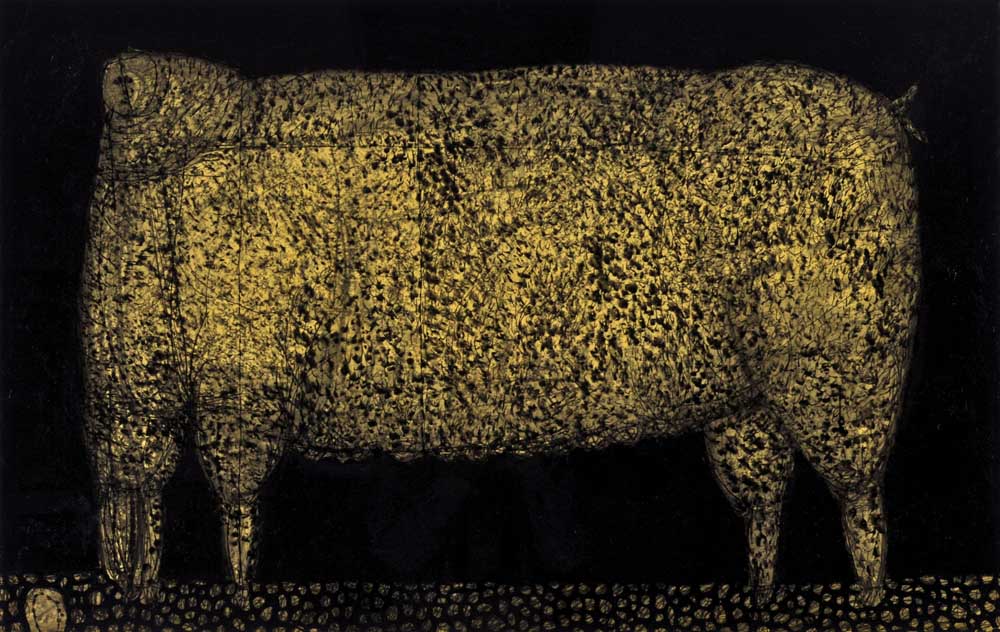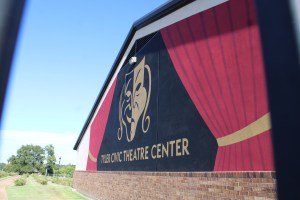Tyler Museum of Art explores the abstract world of late, great Joseph Glasco
Published 12:00 am Friday, November 1, 2019

- Yellow Animal, an ink on paper by Joseph Glasco, is part of an exhibit of works by Glasco at Tyler Museum of Art. The piece is in the museum's permanent collection.(Courtesy)
In the middle and late 1900s, Joseph Glasco was one of the most praised abstract expressionist painters in the United States.
His work was being added to the collections of some of America’s most prestigious museums: the Metropolitan Museum of Art, Museum of Modern Art, Guggenheim Museum and the Whitney Museum of American Art.
Trending
Glasco lived much of his life in New York City and then Galveston, where he died in 1996. But his earliest years were in Tyler.
“A lot of people don’t know that he lived here,” said Tyler Museum of Art curator Caleb Bell.
Since his death, the recognition of Glasco’s contributions to the abstract expressionist movement continues to grow, Bell said.
It is Glasco’s connection to Tyler and his status in the art world that prompted Bell to put together “Works by Joseph Glasco,” a major retrospective of his art, opening Nov. 24.
Bell assembled pieces, both well known and often overlooked, from museums, galleries, private collections and TMA’s own permanent collection. It will be the museum’s first exhibition devoted solely to Glasco.
“It will have a series of his lithographs that have rarely been seen,” Bell said. “It will be a very significant show.”
Trending
Glasco was born in rural Oklahoma in 1925 to a father who was a wildcatter. When the East Texas Oilfield was discovered in 1931, the family moved to Tyler and Glasco began taking art lessons.
He continued studies while at a boarding school in Missouri and later at the University of Texas at Austin and in Europe. He served in the Army in World War II and then moved to New York City, where he became part of a group of painters, including Jackson Pollock, who were exploring abstract art.
A show of Glasco’s work at a New York City art gallery caught the attention of Dorothy Miller, the curator of the Modern Museum of Art. Miller purchased some of Glasco’s paintings, making him the youngest artist in the museum’s collection. She was so impressed with Glasco that she included him in the museum’s influential exhibition “15 Americans” in 1952.
Miller proclaimed Glasco as among America’s “distinguished artists” who use “form and symbol to express the quality and dimension of his (life) experience.”
“‘Fifteen Americans’ put him on the map,” Bell said of Glasco’s inclusion in the show, which featured art by his better known peers Pollock, William Baziotes and Mark Rothko.
From the 1950s through the 1970s, galleries and museums in New York City displayed Glasco’s paintings and sculptures, which ranged from stylized figures to increasingly more abstract imagery.
“He (Glasco) stood apart from his peers in that his paintings were abstract yet figural, merging landscapes with biomorphic forms,” art historian Pete Gershon noted in a book on contemporary art.
Glasco once wrote of his style, characterized by geometric patterns that double as linear figures: “There is no modern painting. There is no abstract painting. The very nature of art is abstract and has always been.”





